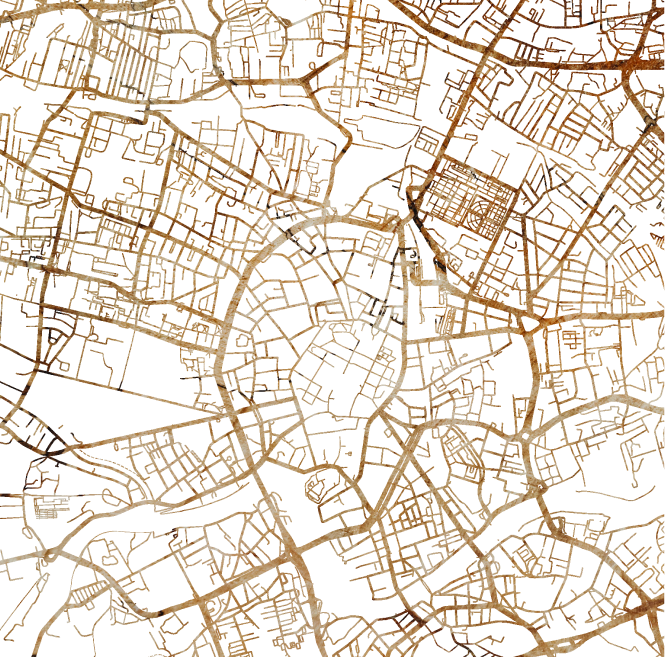The western district is organized around a giant park
For many, Grabiszyn conjures images of the anonymous blocks that trended in Poland’s cities throughout the sixties and the seventies. A deeper dive inside this western district tells a different story .
Based in Wroclaw, Poland
Based in Wroclaw, Poland
General Info
For
many, Grabiszyn conjures images of the anonymous blocks that trended in
Poland’s cities throughout the sixties and the seventies. A deeper dive inside
this western district tells a different story though, and that much becomes
clear having first explored Grabiszyn’s calling card: the immense Grabiszynski
Park. A place of many parts, the area is as much about greenery and new build
as it is light industry and Communist housing. With such a rich texture, its
perhaps fitting that its home to Zajezdnia; found in a former bus depot, this
epic museum explores Wrocław’s history from 1945 to
present day. Celebrating not just the key historical events, but the lives of
the ordinary men and women that lived to see them, this extraordinary space
brings the past alive with star exhibits involving government eavesdropping
devices, a bullet-ridden shoe belonging to an anti-communist protestor, and locally-made
computers from the 1970s.

Architecture & Property
At first
glance, Grabiszyn could be mistaken for a typical post-war Polish neighbourhood
– pre-fabricated socialist era blocks are commonplace, but these disguise a
more nuanced offer found in the side streets. Wedged between the park and
Hallera street, for instance, sits an attractive grid of detached and
semi-detached housing. From more recent times, Ogrody Grabiszynskie is a well-known
multi-block complex whilst Ogrody Hallera offers ‘above popular standard’
accommodation in a series of five-storey buildings set around communal
greenery. Touting a chessboard colour scheme, Kwadrat is a visually striking seven-storey
complex built a stone’s throw from another flagship development: Corte Verona.
Although completed over a decade ago, such is its distinctive cubist-style
architecture the latter continues to be as relevant now as it was when it first
came to the market. Lastly, Impressio has also helped shape Grabiszyn’s reputation
through its creation of five low-lying multi-family buildings within a secure
and pleasant gated area. With several plots ripe for development, and a growing
number of firms choosing to base their office operations in the vicinity,
Grabiszyn is an area that will continue to prosper.
Architecture & Property
At first
glance, Grabiszyn could be mistaken for a typical post-war Polish neighbourhood
– pre-fabricated socialist era blocks are commonplace, but these disguise a
more nuanced offer found in the side streets. Wedged between the park and
Hallera street, for instance, sits an attractive grid of detached and
semi-detached housing. From more recent times, Ogrody Grabiszynskie is a well-known
multi-block complex whilst Ogrody Hallera offers ‘above popular standard’
accommodation in a series of five-storey buildings set around communal
greenery. Touting a chessboard colour scheme, Kwadrat is a visually striking seven-storey
complex built a stone’s throw from another flagship development: Corte Verona.
Although completed over a decade ago, such is its distinctive cubist-style
architecture the latter continues to be as relevant now as it was when it first
came to the market. Lastly, Impressio has also helped shape Grabiszyn’s reputation
through its creation of five low-lying multi-family buildings within a secure
and pleasant gated area. With several plots ripe for development, and a growing
number of firms choosing to base their office operations in the vicinity,
Grabiszyn is an area that will continue to prosper.
Green & Recreational Areas
Sometimes called the green lungs of the city, the 48 hectare Grabiszynski Park is set on the footprint of a 19th century necropolis that was liquidated in the 1960s – of its more curious preserved elements is a cemetery for Italian soldiers that fell in WWI. Close by, discover a memorial honouring the area’s past function. Despite these eerie undertones, the park has become a much cherished feature of Wrocław containing as it does linden-lined alleys, playgrounds, a mini golf course and walking trails. Densely wooded in parts, occasional sightings of wild boar and roe deer say much for its quiet seclusion.
Stretching from one end of Grabiszyn to the other, it’s no surprise that Grabiszynski Park is known far and wide. However, even the more built-up areas have been designed to incorporate areas of greenery. Charmingly, the district also features vast swathes given over to allotments.
